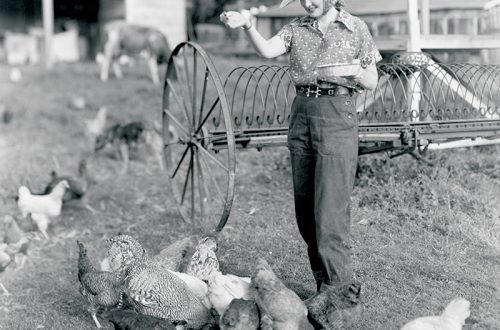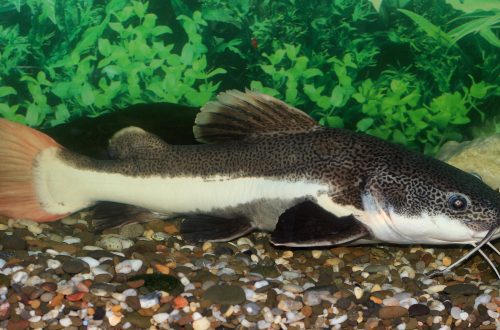
What are food chains in different forests: description and examples
A food chain is the transfer of energy from its source through a series of organisms. All living beings are connected, as they serve as food objects for other organisms. All food chains consist of three to five links. The first are usually producers – organisms that themselves are able to produce organic substances from inorganic ones. These are plants that obtain nutrients through photosynthesis. Next come the consumers – these are heterotrophic organisms that receive ready-made organic substances. These will be animals: both herbivores and carnivores. The closing link of the food chain is usually decomposers – microorganisms that decompose organic matter.
The food chain cannot consist of six or more links, since each new link receives only 10% of the energy of the previous link, another 90% is lost in the form of heat.
Contents
What are food chains?
There are two types: pasture and detritus. The former are more common in nature. In such chains, the first link is always the producers (plants). They are followed by consumers of the first order – herbivorous animals. Next – consumers of the second order – small predators. Behind them are consumers of the third order – large predators. Further, there may also be fourth-order consumers, such long food chains are usually found in the oceans. The last link is the decomposers.
The second type of power circuits – detritus – more common in forests and savannahs. They arise due to the fact that most of the plant energy is not consumed by herbivorous organisms, but dies off, then being decomposed by decomposers and mineralized.
Food chains of this type start from detritus – organic residues of plant and animal origin. First-order consumers in such food chains are insects, such as dung beetles, or scavengers, such as hyenas, wolves, vultures. In addition, bacteria that feed on plant residues can be first-order consumers in such chains.
In biogeocenoses, everything is connected in such a way that most types of living organisms can become participants in both types of food chains.
Food chains in deciduous and mixed forests
Deciduous forests are mostly distributed in the Northern Hemisphere of the planet. They are found in Western and Central Europe, in Southern Scandinavia, in the Urals, in Western Siberia, East Asia, North Florida.
Deciduous forests are divided into broad-leaved and small-leaved. The former are characterized by such trees as oak, linden, ash, maple, elm. For the second – birch, alder, aspen.
Mixed forests are those in which both coniferous and deciduous trees grow. Mixed forests are characteristic of the temperate climate zone. They are found in the south of Scandinavia, in the Caucasus, in the Carpathians, in the Far East, in Siberia, in California, in the Appalachians, near the Great Lakes.
Mixed forests consist of trees such as spruce, pine, oak, linden, maple, elm, apple, fir, beech, hornbeam.
Very common in deciduous and mixed forests pasture food chains. The first link in the food chain in the forests are usually numerous types of herbs, berries such as raspberries, blueberries, strawberries. elderberry, tree bark, nuts, cones.
First-order consumers will most often be such herbivores as roe deer, elk, deer, rodents, for example, squirrels, mice, shrews, and also hares.
Second order consumers are predators. Usually it is a fox, wolf, weasel, ermine, lynx, owl and others. A vivid example of the fact that the same species participates in both pasture and detrital food chains will be the wolf: it can both hunt small mammals and eat carrion.
Second-order consumers can themselves become prey to larger predators, especially birds: for example, small owls can be eaten by hawks.
The closing link will be decomposers (decay bacteria).
Examples of food chains in a deciduous-coniferous forest:
- birch bark – hare – wolf – decomposers;
- wood – Maybug larva – woodpecker – hawk – decomposers;
- leaf litter (detritus) – worms – shrews – owl – decomposers.
Features of food chains in coniferous forests
Such forests are located in the north of Eurasia and North America. They consist of trees such as pine, spruce, fir, cedar, larch and others.
Here everything is very different from mixed and deciduous forests.
The first link in this case will not be grass, but moss, shrubs or lichens. This is due to the fact that in coniferous forests there is not enough light for a dense grass cover to exist.
Accordingly, the animals that will become consumers of the first order will be different – they should not eat grass, but moss, lichens or shrubs. It can be some types of deer.
Despite the fact that shrubs and mosses are more common, herbaceous plants and bushes are still found in coniferous forests. These are nettle, celandine, strawberry, elderberry. Hares, moose, squirrels usually eat such food, which can also become first-order consumers.
The consumers of the second order will be, like mixed forests, predators. These are mink, bear, wolverine, lynx and others.
Small predators such as mink can become prey for third order consumers.
The closing link will be the microorganisms of decay.
In addition, in coniferous forests are very common detrital food chains. Here, the first link will most often be plant humus, which is fed by soil bacteria, becoming, in turn, food for unicellular animals that are eaten by fungi. Such chains are usually long and may consist of more than five links.
Examples of food chains in a coniferous forest:
- pine nuts – squirrel – mink – decomposers;
- plant humus (detritus) – bacteria – protozoa – fungi – bear – decomposers.





